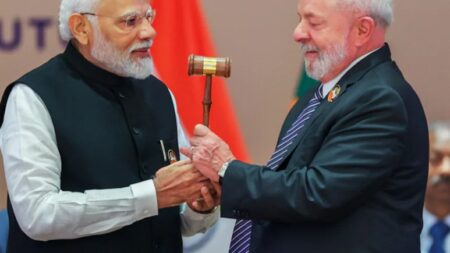New Delhi: India’s Chief of Defence Staff (CDS) General Anil Chauhan has issued a strong message to Pakistan, asserting that the Indian Armed Forces must be prepared to respond decisively to any act of violence, whether carried out by state or non-state actors. Speaking at the inaugural edition of the Annual Trident Lecture Series, Gen Chauhan outlined a new strategic vision for India’s defence posture amid evolving regional threats.
“We must understand this new norm—that we have to be prepared to respond to any act of aggression from Pakistan, whether it originates from their military or terrorist proxies,” said the CDS. The lecture was organised by the Centre for Joint Warfare Studies (CENJOWS) at the Manekshaw Centre in Delhi Cantonment.
In his address, General Chauhan strongly questioned the legitimacy of Pakistan’s “full-spectrum deterrence” doctrine, which includes threats across the conventional and nuclear spectrum.
“We need to create more space for conventional operations between the unconventional and nuclear domains. The Pakistani doctrine, which seeks to deter at every level from low-intensity conflict to nuclear war, must be challenged. Terrorists cannot hide anywhere in Pakistan’s territory,” he stated emphatically.
He added that India’s military preparedness must remain at the highest level—24/7, 365 days a year, given the blurred lines between war and peace in the modern era.
The CDS underlined the importance of building military capacity to strike both fixed and mobile targets at extended ranges. This, he said, would be a key requirement for India’s future military engagements and deterrence strategies.
“Technological superiority is no longer optional—it is a necessity. We need to stay ahead of our adversaries, not just match them,” he said.
The lecture also focused on the need for a uniquely Indian doctrine of warfighting—one that blends conventional and unconventional tools and is based on indigenous innovation, multi-domain integration, and proactive defence strategies.
According to a statement by Headquarters Integrated Defence Staff (HQ IDS) on social media, Gen Chauhan called on military leaders to embrace a “proactive, indigenous, and adaptive vision” built on strategic foresight, doctrinal agility, and technological autonomy.
“He articulated the need to craft an Indian way of war-fighting, combining kinetic and non-kinetic capabilities, and adopting a bold shift toward integrated and multi-domain operations,” the HQ IDS post read.
General Chauhan also highlighted the need to adapt quickly to disruptive technologies, overhaul outdated military structures, and ensure synergy across the Army, Navy, and Air Force to address modern security threats. He noted that integration and convergence of technologies will be key to shaping future conflicts and maintaining national security.
A major highlight of the event was the release of the first-ever ‘General Bipin Rawat Paper’ titled “Manned-Unmanned Teaming (MUM-T)”. The paper pays tribute to India’s first Chief of Defence Staff and his vision to transform India’s joint war-fighting doctrine.
Additionally, the August 2025 edition of ‘Synergy’, CENJOWS’s flagship defence journal, was launched. The issue features detailed analyses of current and emerging security trends in the global and regional landscape.
General Chauhan’s speech signals a significant shift in India’s military posture—one that favours readiness, precision, technological innovation, and a robust challenge to adversaries’ strategic doctrines. With Pakistan’s ongoing support for terror networks and regional instability, India’s message is clear: deterrence will be backed by decisive preparedness and the capacity to strike when necessary.








